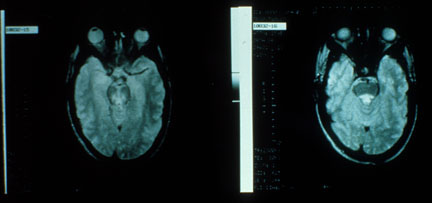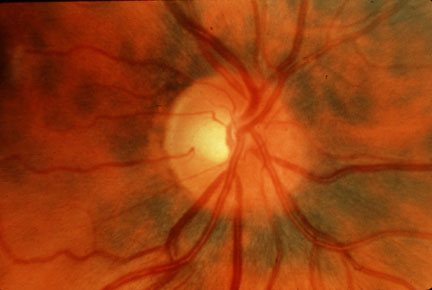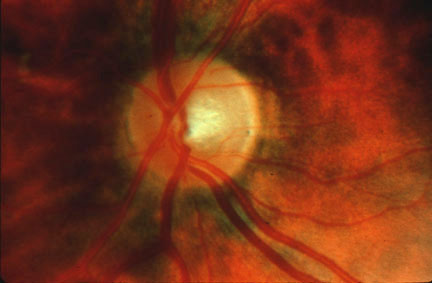Case Studies in Ophthalmology
Cases for the Ophthalmology Clerkship
Note to Medical Students on the Ophthalmology Rotation at the University of Iowa:
Print the question and answer sheet (Ctrl-Print or Command-Print) and enter your answers on it. You may prefer to type your answers on this page and then print it. If you do this, be careful that your full answer shows in the printout. Experience with Internet Explorer has been less than optimal.
Return the printed copy with your answers to Michelle Snyder or Dr. Kemp via campus mail (11290 PFP) or scan as a pdf and email to Michelle at michelle-r-snyder@uiowa.edu or Dr. Kemp at pavlina-kemp@uiowa.edu.
Case #51 Internuclear Ophthalmoplegia
History
A 30 year old woman with a history of optic neuritis at age 24 developed horizontal diplopia. She is able to abduct both eyes but cannot fully adduct either eye. There is a mild vertical divergence (skew deviations).
Photo #1
Photo #2

Photo #3

Photo #4

Enter Full Name (required):
Your email address (required):
Question #1
What is the likelihood of developing multiple sclerosis after a bout of optic neuritis?
Question #2
Other than M.S., what conditions could cause bilateral internuclear ophthalmoplegia?
Question #3
What tests should be done to establish the diagnosis fo M.S.?
Question #4
At this stage would she have possible, probable or definite M.S.?
Question #5
Where in the brain is the lesion responsible for her internuclear ophthalmoplegia?
References
Rizzo JF, Lessell S: Risk of developing multiple sclerosis after uncomplicated optic neuritis: A long-term prospective study. Neurology 1988; 38:185.
Gonyea EF: Bilateral internuclear ophthalmoplegia. Arch Neurol 1974;31:168.
Cogan DG: Bilateral internuclear ophthalmoplegia. Arch Ophthalmol 1970; 84:583.
Matthews WB, et al. McAlpine’s Multiple Sclerosis. Churchill Livingstone, New York, 1985.